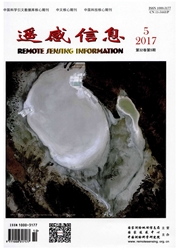

 中文摘要:
中文摘要:
根据遥感获取的地表温度估计气温在时空上的连续分布有重要意义。利用MODIS传感器反演的地表温度产品分别建立新疆克拉玛依气象站生长季节、非生长季节的地表温度和气温的线性回归模型以估计气温,并利用相同气象站不同时段、相同时段不同气象站的数据对该模型进行验证,最后得到新疆典型区内非生长季节的日最低、最高气温分布。结果表明:相对于MYD11A1产品,MOD11A1产品的地表温度数据能更好地估计气温;气温估计模型在生长季节效果欠佳,但在非生长季节结果较好,MOD11A1产品估计日最低气温的均方根误差和平均绝对误差分别为2.4℃~3.2℃、1.9℃~2.8℃,估计日最高气温的均方根误差和平均绝对误差分别为2.9℃~3.1℃、2.2℃~2.6℃,R2为0.91~0.96。
 英文摘要:
英文摘要:
Accurate estimation of spatially distributed air temperature based on continuous land surface temperature (LST) products retrieved from remotely sensed images is of great significance.To estimate daily minimum and maximum air temperature,linear regression models of the growing and non-growing season on Karamay meteorological station were conducted respectively.Then two validation experiments were carried out,one of which took data collected from the same station in different periods to validate the models,while the other experiment applied the models to other stations.Finally,the validated models were used to produce full image coverage for the typical area of Xinjiang.The results showed that deprived LST from Terra platform (MOD11A1)had higher accuracy than deprived LST from Aqua platform (MYD11A1 ).Models of the non-growing season with R 2 = 0.91 ~ 0.96 were better than those of the growing season.Moreover,this method provided an acceptable estimation of daily minimum air temperature with RMSE(root mean square error)=2.4℃~3.2℃ and MAE(mean absolute error)=1 .9℃~2.8℃,and also improved the accuracy of daily maximum air temperature significantly with RMSE =2.9℃~3.1 ℃ and MAE=2.2℃~2.6℃ during the non-growing season.
 同期刊论文项目
同期刊论文项目
 同项目期刊论文
同项目期刊论文
 期刊信息
期刊信息
